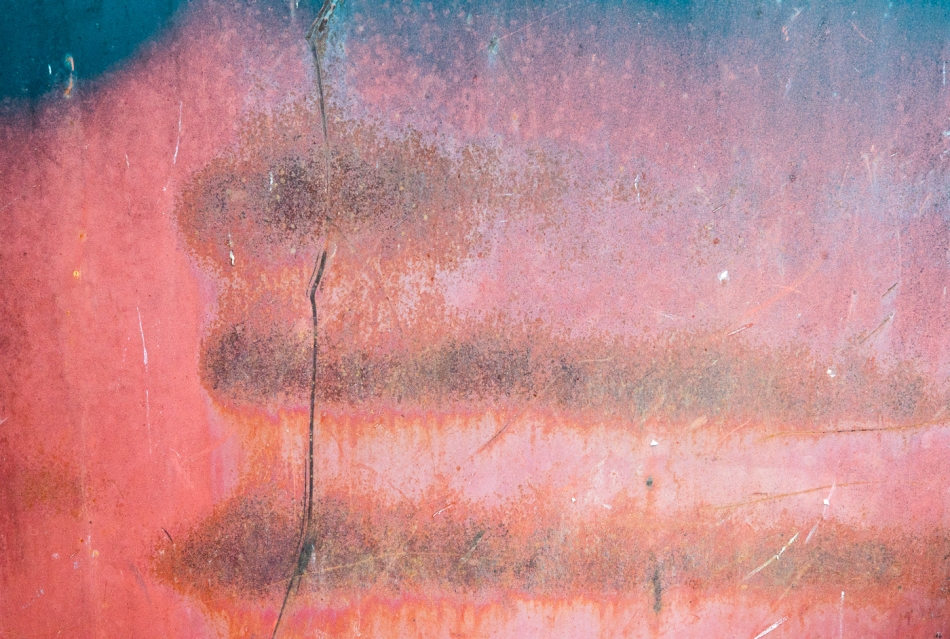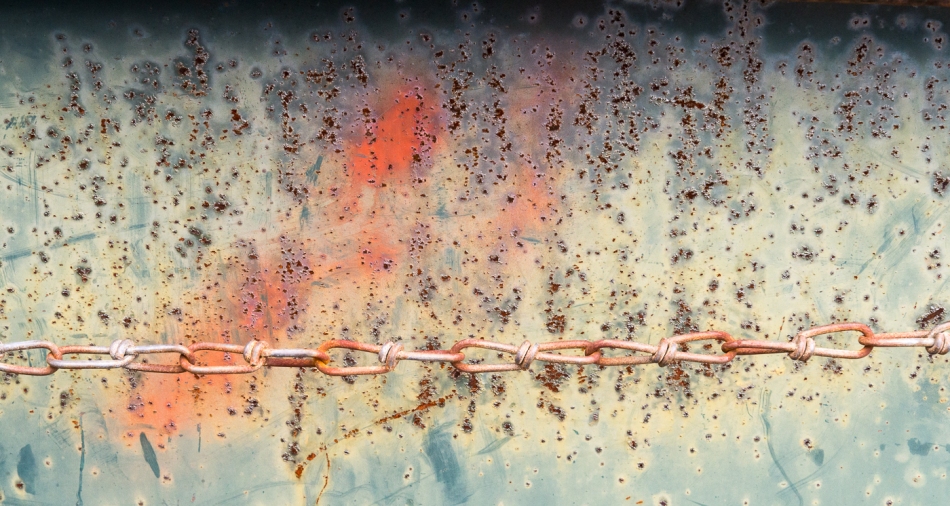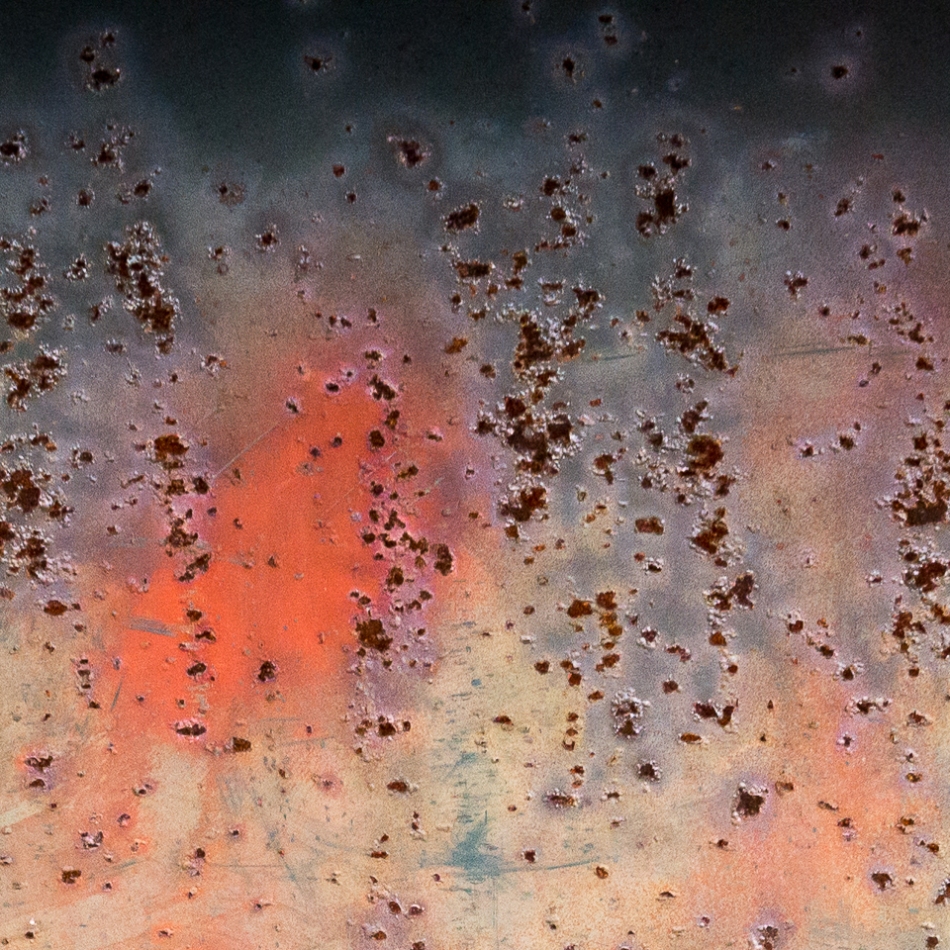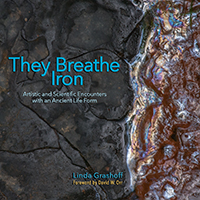Should We or Should We Not?
November 23, 2018
Alan Goldsmith of Pixetera left a comment on my last post that deserves more attention. Here’s what he said about my photographs of oil-film-topped puddles in my drug store’s parking lot:
“[T]hey raise this question for me again: In making beautiful photos of environmental pollution and destruction, does the photographer sabotage his or her ecological message? Or, to put it another way: Should we make really ugly, awful pictures if we want to show the harmful effects of contaminants in our air, land, and water? Would anyone even look at them then?
“I have yet to hear a satisfactory answer to this dilemma.”
I have struggled with Alan’s question in presenting my photographs of dumpsters, and certainly the question pertains even more strongly to photographs of oil pollution. Recently I considered this issue in a short essay to go with some photographs of dumpsters for the 2018 Fall issue of Eureka!.*
Here are some new photographs of dumpsters, taken Wednesday. The first two are of a dumpster I have previously photographed. The last is a detail of the third photograph.
*Eureka! is a small literary magazine created by and for residents of Kendal at Oberlin, where I live.





I love your dumpster images but recognise the conflict as well. Your short essay is spot on in its description of the issue and the best and probably only realistic approach we can take to it.
LikeLike
November 23, 2018 at 7:30 AM
Thanks for clicking through to the essay, Alastair, and thanks for your generous comment.
LikeLike
November 23, 2018 at 8:51 AM
I understand the comments that Alan makes as well as your essay about finding the beauty in something that has other universal consequences for us in terms of ecology. I struggle with this as well in my current work where I am making dresses out of plastic bags. The dresses are something that holds at least the possibility of being pretty, something we can associate with the idea of beauty. Something that references women’s work in its sewing and use of materials on hand. But am I just making larger objects with plastic bags that will be harder to recycle, reduce or reuse? Or is it worth the effort to make something that carries a message that will be seen in an exhibit causing someone to think about all of the plastic they are using? Like you and Alan, I don’t have any clear answers. But somewhere in my heart I feel that making a point, that the message about the necessity to think about the abundance of plastic bags is important for me to pursue.
LikeLike
November 23, 2018 at 9:42 AM
Thank you, Clare, for expanding this discussion. It seems to me that your plastic-bag dresses carry a positive message (causing someone to think about all of the plastic they are using as well as references to women’s work and using materials at hand) that is louder than the negative consequences the art works themselves. But you’re right; it’s still a concern. Here are two links to keep the conversation going: http://www.ethicsingraphicdesign.org/one-mans-trash-is-another-mans-treasure/ and https://www.youtube.com/watch?v=L35R-GQOL9E. Mentioned in the first link, the second link is to the film about artist Vik Muniz’s project, Waste Land.
LikeLike
November 23, 2018 at 11:57 AM
First, I’m happy to see the photos, once again drawing us in to what might be describes as a mysterious world of beauty in unexpected places. I like the chain – a new touch, and well seen, with those colors and textures. 🙂 Your essay is excellent! It’s very well written (and illustrated, of course). Clear, even-handed, thoughtful, concise. You know I always go for the both/and instead of the either/or, so your conclusion sits well with me. Thank you!
LikeLike
November 23, 2018 at 4:16 PM
Thank you, Lynn. I don’t know what that chain is used for; it’s part of this dumpster, and I’ve seen similar chains on the sides of other dumpsters. I’m glad you like the essay. Both/and seemed the only way to go with this; I didn’t want to give up on either side. But read what Adrian has to say.
LikeLiked by 1 person
November 24, 2018 at 2:29 PM
Beautiful images, Linda. My take on the question “… In making beautiful photos of environmental pollution and destruction, does the photographer sabotage his or her ecological message?” is very simple – there’s no reason at all why a photographer has to have a message, ecological or otherwise. Those who want to promote a message or cause of any sort can do so via their photography, while those who simply want to create beautiful / striking / artistic / etc etc can do so too. Personally, I’m usually in the latter camp, I’m aiming to create aesthetically effective images; were I to think about making images that promoted a Green / ecological cause, then yes, I suppose my images would portray pollution, contamination, extinction, etc. Adrian
LikeLike
November 24, 2018 at 6:11 AM
Thanks, Adrian, and thanks for another perspective. I prefer that my photographs have a message, but I often have to ask myself what message certain of my photographs carry. I have written before (https://lindagrashoff.wordpress.com/2018/06/10/and-happy-ever-after/) about my love of the material world and its significance to my photography. So my message is always that the physical world is real and I love it, but since that thought could pertain to all my photographs indiscriminately, I like when I have another answer as well. I hope that those who simply want to create beautiful/striking/artistic/etc. etc. images continue to do so. There’s room for everyone.
LikeLiked by 1 person
November 24, 2018 at 2:55 PM
I’m glad to be helpful, my friend. Considering things as we should, there is room for everyone, but there are those (and I’m NOT referring to any of the commenters on your post here) who feel their views superior / more right than those of others – that is a part of Human Nature, the Human Condition! A
LikeLike
November 25, 2018 at 1:26 AM
In thinking more about those who simply want to create beautiful/striking/artistic/etc. etc. images, I wonder if you might accept that those images also carry a message: that there is beauty in the world and/or in the hand of the artist. Maybe (I’m trying out this idea here) we can’t help but convey a message with our images. And to your point here, yes, there will always be some who think there is only one way to create art or believe or not believe. They are the ones who are missing out on the richness of the world.
LikeLiked by 1 person
November 25, 2018 at 8:49 AM
Oh yes, I can understand that all images may carry a message, and I’m all for that message being about beauty in the world / in the hand of the artist – but I never have the thought of such a message in mind when I’m creating an image – I simply enjoy creating such images and, if I can, writing about them – I very much enjoy the writing too. And your point about missing out in the richness of the world, yes, absolutely, yes – but this is Human Nature, this is how, about one thing or another, many of us are. A
LikeLike
November 25, 2018 at 9:17 AM
Yes, you’re right, Adrian. It sounds like you are more accepting of this kind of diversity than maybe I am. It’s a hard truth.
LikeLike
November 25, 2018 at 10:43 AM
It seems to me that there’s no other option than to be accepting of Human Nature / the Human Condition. After, just look back at human history, and just look at the posturings / intolerance of various human groups, nations, religions, you name it. Its there out in the open for us all to see, and I really don’t think that its going to change much. This is all very sad and negative, but I simply try to be realistic. A 🙂
LikeLiked by 1 person
November 26, 2018 at 7:10 AM
While I think of it, one of the most important moments in history, for me, is the Christmas Truce in World War 1. Here, for a brief moment, there arose the possibility of rejecting violence, of embracing harmony amongst Mankind. And the outcome was that it was suppressed, and never allowed to happen again – on the orders of the “ancestors” of those military dignitaries who, today, so sorrowfully and solemnly lay wreaths at cenotaphs for the war dead. The Christmas Truce was never allowed to blossom, but for me it is a vast, mammoth event in human history. A
LikeLiked by 1 person
November 26, 2018 at 9:41 AM
I don’t know if you’ll agree with the BBC’s treatment of this story, Adrian, but I’ll add a link for people like me who may be only vaguely familiar with the Christmas Truce of World War I: http://www.bbc.co.uk/guides/zxsfyrd.
LikeLike
November 26, 2018 at 2:31 PM
Linda, thank you for this link, it contains much that I didn’t know. However, the fact remains that such truces did occur and, as the link says, “High Command was angry – they feared that men would now question the war, and even mutiny, as a result of fraternising with the enemy that they were meant to defeat.” . That says it all, I think. We yearn for things, for peace and happiness for example, and to me these truces represent an instance when our yearnings were almost fulfilled. A 🙂
LikeLiked by 2 people
November 27, 2018 at 2:08 AM
Wonderful essay in Eureka, Linda: beautifully written and chock full of enlightened thought. It also gave me a renewed appreciation of your dumpster work.
Just want to be clear about my original question: It referred only to those photographers who are trying to draw attention to an environmental or social issue, and thereby hoping to galvanize action for change. In those cases, it seems to me that beautiful images send a contrary message, or undermine the severity of the problem and need for solutions by distracting us with their siren calls.
(I’m not sure though what the alternative, i.e., “ugly” or “awful” photographs, would look like or how they would be any more effective. 🙂 )
Finding beauty in places where most of us would never look for it is a different mission however than the artists or photo journalists making impassioned calls for reform. To me, the former is a form of recycling that tries to make the most out of an unfortunate situation and isn’t at all condoning it.
LikeLike
November 25, 2018 at 2:08 PM
Happy to know you like the essay, Alan, and the dumpster work. Thank you. As for photography that is effective in drawing attention to environmental or social issues, I think it must at least not eschew good composition because composition isn’t only about the beauty of the composition; it’s also about pointing. Of course what good composition is, especially in such cases, is debatable. So maybe my insisting on good composition doesn’t really get us anywhere.
LikeLike
November 25, 2018 at 2:41 PM
This is an interesting discussion but one, like so many we have ,that really can’t be resolved. I stayed up way too late last Saturday evening, reading your essay and all the comments, then trying, without success, to write my own. I still don’t have much to add…but I will say that I appreciate the beauty of the natural world that you convey through your photographs. Until I found your blog, I thought the Leptothrix discophora films I see so often in our marshes were oil slicks. Your previous post demonstrates why I could think that and how to tell the difference; And that the appearance arises from the same thin-film interference, a natural phenomenon. Thank you and I hope you will not be deterred from doing what you are doing. 🙂
Perhaps, if I understood him correctly, echoing what Adrian said, so many of us as individuals want a better way but the reality is that we are just a dirty, wasteful, destructive, and invasive species in the natural environment. So if you can accept that, the oil and gas slick on the parking lot are just part of the natural world….
LikeLiked by 2 people
November 27, 2018 at 10:55 AM
Thank you, Mic. I can’t tell you how glad I am that what I have posted on this blog has been useful to you. I won’t be deterred, but right now I’m getting ready for the trek to Florida and will probably lag a bit. Your addition to Adrian’s comments is intriguing. Thank you for it.
LikeLiked by 1 person
November 27, 2018 at 9:31 PM
I do very much appreciate your work. I am also glad that you took my additional comment in the spirit that I offered it; I was a little worried that it came off sounding very pessimistic when it is just a different way of seeing our place in the world. While I think it has some validity, I still hold a hope that we can do better. 🙂
Best wishes for a warm and enjoyable stay in Florida.
LikeLike
November 27, 2018 at 9:56 PM
Thanks for your good wishes, Mic. I hope we can do better, too.
LikeLiked by 1 person
November 28, 2018 at 7:01 AM
I love anything rusty and weathered. These make excellent abstracts Linda!
LikeLiked by 1 person
December 1, 2018 at 10:11 AM
Thank you, Denise. I confess that I ogle every dumpster I walk by. People must wonder what I’m up to.
LikeLiked by 1 person
December 1, 2018 at 8:54 PM
My friend Phyllis wrote a comment on my LinkedIn page that doesn’t transfer over here. She enlarges this discussion even further, and I want to include here what she said so that more may appreciate it.
“Linda, from time immemorial, as you know better than I, art has given us a perspective we otherwise lack—on death, the ephemeral, and human harm. And more, of course. To illuminate the scenes that dramatize our harm to the earth, without judgment, is to say that they an be seen as worthy of attention. That is not necessarily a celebration of accidental beauties. For me, your art is a way to help become alert and thereby live more fully—cognizant and aesthetically attuned. Paintings of battles, volcanos exploding, historical tragedies, documents of horrors—tell us the story of ourselves that we must not ignore. Some glorify, sentimentalize, or expose their subjects. Some record the facts with focus, framing, and keen attention. The moral dilemma is real for audience as well as artist. Thank you for your sensitive essay.”
I thank Phyllis for her valuable contribution.
LikeLiked by 1 person
December 23, 2018 at 4:18 PM
I find these abstractions appealing, no matter that they’re from dumpsters. Oxidation is impartial.
LikeLike
December 25, 2018 at 9:50 AM
Thanks for weighing in, Steve. We seem to want to believe that nature intends us good when it gives us beautiful sunsets and means us harm when it lashes us with hurricanes. But as you say, nature lacks intension. It is simply the manifestation of the laws of physics, biology, and such. If we can understand how these laws work, we may be able to influence some of their actions. But I dare say humans will never be able to take full charge of nature; there are just too many variables.
LikeLike
December 25, 2018 at 2:03 PM